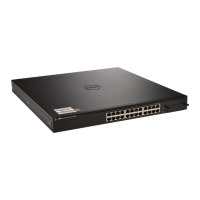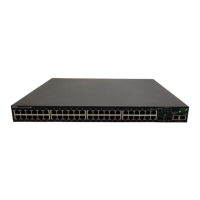360 Monitoring Switch Traffic
The packet that is copied to the destination port is in the same format as the
original packet on the wire. This means that if the mirror is copying a received
packet, the copied packet is VLAN tagged or untagged as it was received on
the source port. If the mirror is copying a transmitted packet, the copied
packet is VLAN tagged or untagged as it is being transmitted on the source
port.
After you configure the port mirroring session, you can enable or disable the
administrative mode of the session to start or stop the probe port from
receiving mirrored traffic.
Why is Traffic Monitoring Needed?
Monitoring the traffic that the switch handles, as well as monitoring all traffic
in the network, can help provide information about network performance and
utilization. This information can be useful in network planning and resource
allocation. Information about traffic flows can also help troubleshoot
problems in the network.
Default Traffic Monitoring Values
The sFlow agent is enabled by default, but sampling and polling are disabled
on all ports. Additionally, no sFlow receivers (collectors) are configured.
Table 16-1 contains additional default values for the sFlow feature.
RMON is enabled by default, but no RMON alarms, events, or history
statistic groups are configured.
Port mirroring is disabled, and no ports are configured as source or destination
ports. After you configure a port mirroring session, the administrative mode is
disabled until you explicitly enable it.
Table 16-1. sFlow Defaults
Parameter Default Value
Receiver timeout for sampling 0
Receiver port 6343
Receiver Maximum Datagram Size 1400 bytes
Maximum header size 128 bytes

